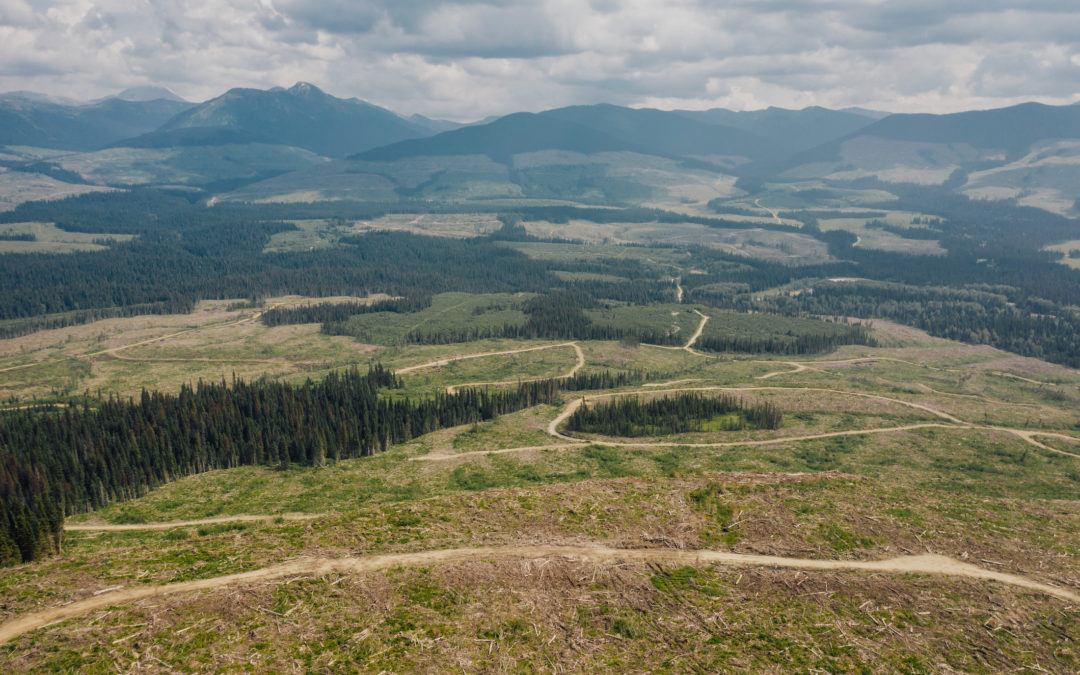SOURCE: The Narwhal
DATE: April 23, 2020
SNIP: “Energy really can grow on trees,” says the website of the Wood Pellet Association of Canada.
The association touts wood pellets — manufactured from sawdust, slash piles and low-grade timber from forestry harvest sites — as a way to fight climate change by replacing coal as an energy source.
“Think firewood,” the website explains to anyone curious about the elongated pellets that resemble pet rabbit food in texture and appearance.
But a new investigation claims pellets made by B.C.’s two largest wood pellet companies originate from whole trees as well as sawmill residuals and finds that burning pellets releases more greenhouse gas emissions than coal, blaming faulty carbon accounting for the industry’s climate-friendly veneer.
Some trees used for pellets, including mature Western red cedars, likely come from logging operations in the province’s rare inland temperate rainforest which provides critical habitat for endangered caribou and other at-risk species, according to the investigation by Stand.earth, released Thursday.
B.C.’s wood pellet industry has grown dramatically over the past decade, fueled by tens of millions of dollars in subsidies from the provincial and federal governments and overseas demand. B.C. is Canada’s leading exporter of wood pellets.
Last November, the B.C. government announced more than $27 million in grants “to help increase the use of wood fibre that would otherwise have been burned as slash.” Slash is a general word for waste wood generated at forestry operations.
Two grants totalling more than $1.5 million went to Pinnacle Renewable Energy Inc. for operations near Burns Lake and Vernon, a company singled out in the Stand.earth investigation.
Stand.earth used photos and satellite imagery of trucks, rail cars and log piles to conclude Pinnacle is using whole logs to make pellets at its Meadowbank facility in Strathnavor, 75 kilometres south of Prince George.
On February 14, 2020, Conservation North members took photos of a logging truck carrying large old Western red cedar trees entering Pacific BioEnergy’s facility in Prince George.
Pinnacle is upgrading its Strathnavor facility, along with others in B.C., to increase production capacity — including by investing in more chippers that can process whole logs to reduce reliance on sawmill residuals, the investigation found.
The company’s wood fibre collection area includes the inland temperate rainforest east of Prince George, which provides critical habitat for endangered southern mountain caribou, according to Stand.earth.
The majority of B.C.’s wood pellets are sold in the United Kingdom, with Japan a distant second. Pellets are also exported to the U.S., Belgium, South Korea and the Netherlands, although in much smaller quantities.
Mary Booth, director of the Partnership for Policy Integrity in Massachusetts, has been tracking the global wood pellet industry since it was in its infancy one decade ago. She said the fast-growing industry is propped up by multi-billion dollar subsidies in Europe intended to help wean countries off coal.
The Drax power station in North Yorkshire, England, for instance, collects subsidies totalling about one billion dollars a year on the grounds that it is facilitating a transition to renewable energy use.
A loophole in international climate agreements classifies biomass energy as carbon neutral, even if wood pellets are made with waste from logging primary forests such as the inland temperate rainforest.

